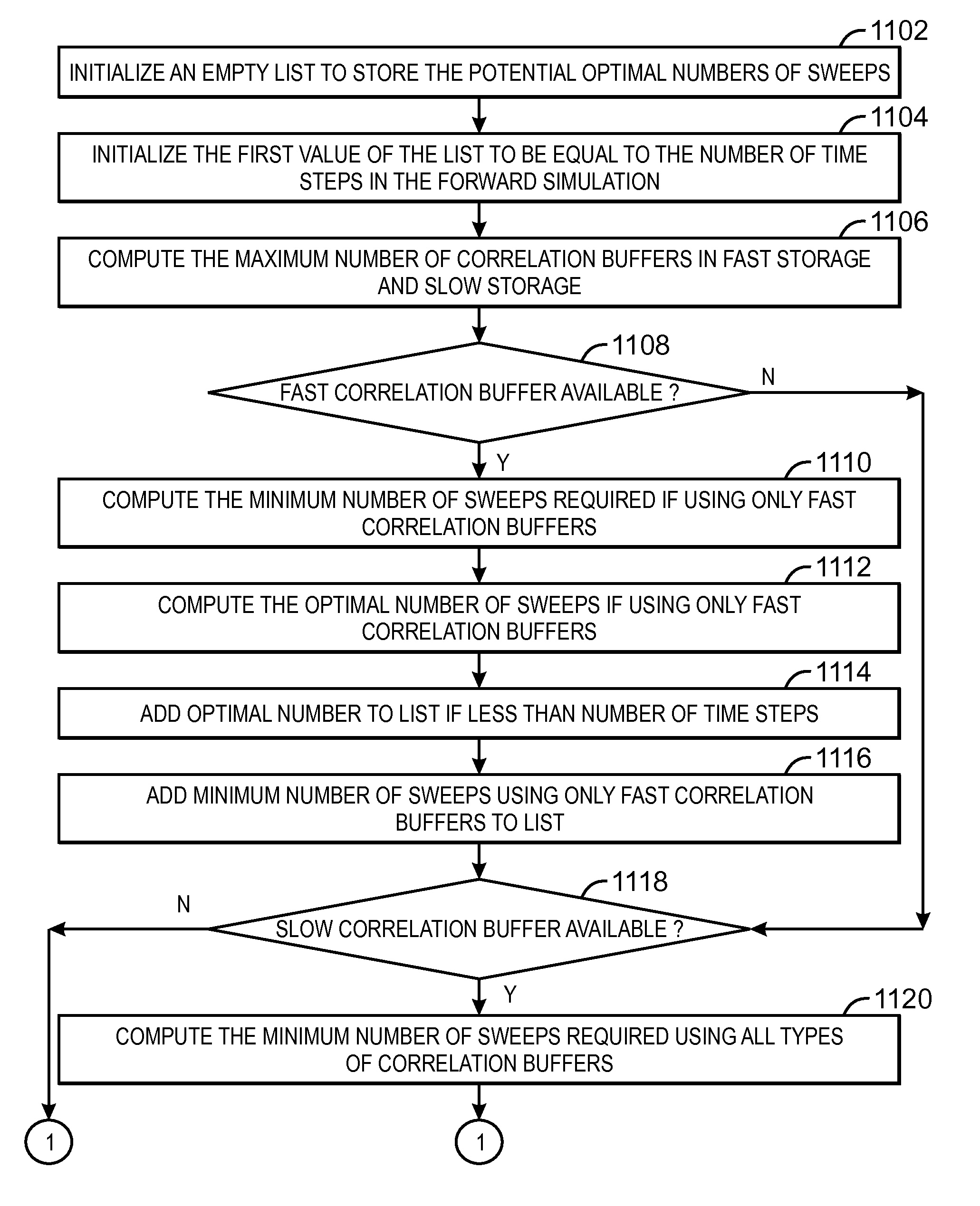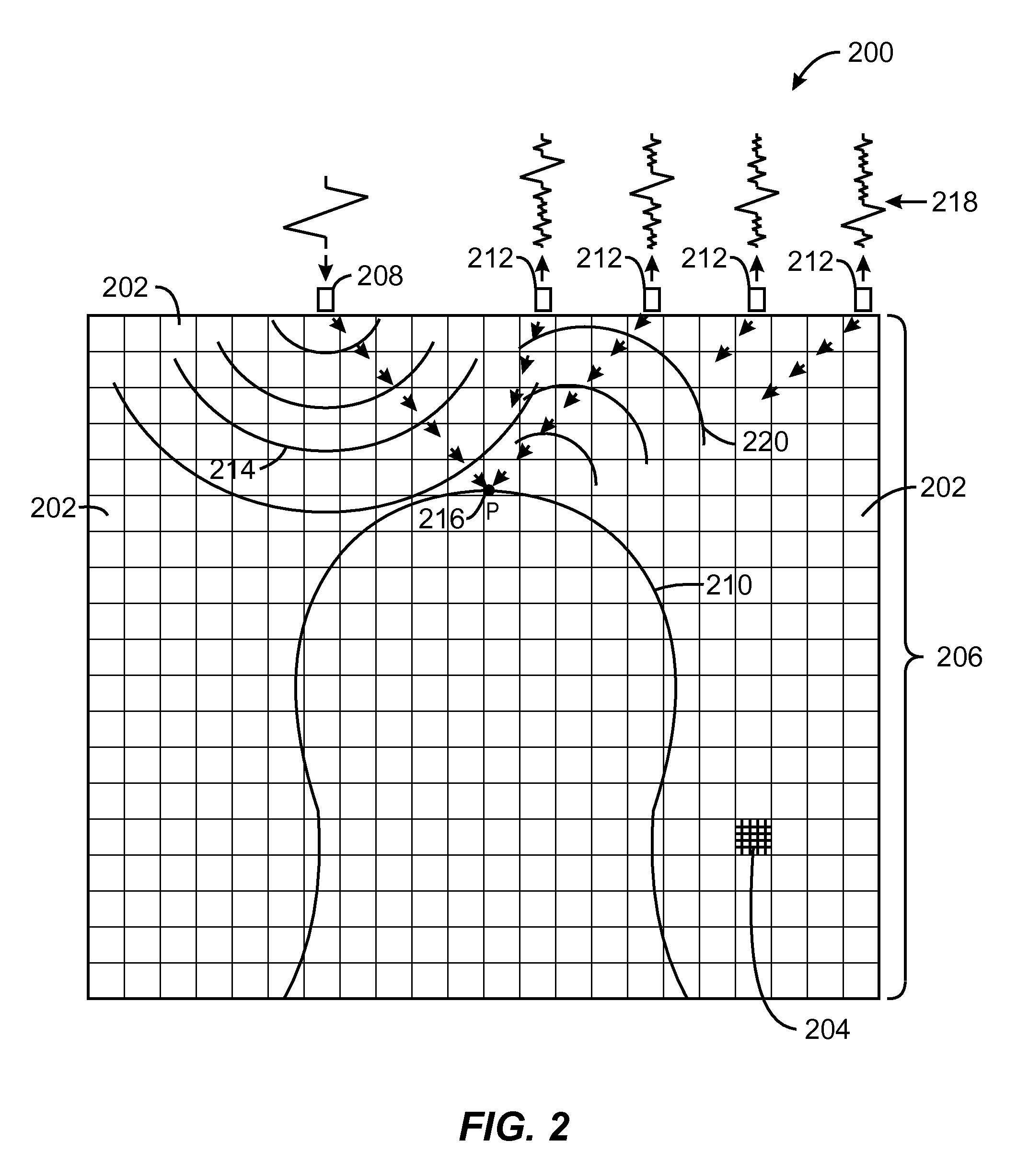Method and system for checkpointing during simulations
a simulation and checkpoint technology, applied in the field of geophysical prospecting, can solve the problems of large amount of storage required, difficulty in moving data, and difficulty in reducing and achieve the effect of lowering the computational cost of a computer simulation
- Summary
- Abstract
- Description
- Claims
- Application Information
AI Technical Summary
Benefits of technology
Problems solved by technology
Method used
Image
Examples
examples
[0202]The Society of Exploration Geophysicists (SEG) Advanced Modeling (SEAM) example described in the “Background” section can be worked using Griewank “optimal” check-pointing and using the present invention for different computer configurations.
[0203]The straightforward, i.e. no checkpointing at all, method that saves all time steps of the forward simulation could mean keeping 40,000 time steps of an 84 gigabyte subsurface volume or roughly 3.36 petabytes of data. Examples for doing RTM on SEAM data demonstrate that the present invention provides the largest advantages over Griewank check-pointing to RAM when RAM is very limited in size compared to the size of the application problem.
[0204]These SEAM RTM application examples use RAM for “fast memory” and disk for “slow memory” and assume that the cost of reading or writing a restart state buffer to disk is five cost units, the cost of reading or writing a correlation buffer from disk is two, and that the cost of computing a forwa...
example a
Griewank in Memory
[0207]S=84G
[0208]Fast Memory=8316G (99 state buffers)
[0209]Forward Cost=114750
[0210]Total Cost=154646[0211]nReadc[F]=39248 nWritec[F]=38540 nReads[F]=751 nWrites[F]=708 nReadc[S]=0 nWritec[S]=0 nReads[S]=0 nWrites[S]=0
example b
Optimal in Memory
[0212]S=84G
[0213]C=7G
[0214]Fast Memory=8316G (use as either state or correlation buffers)
[0215]Forward Cost=79262
[0216]Total Cost=119261[0217]nReadc[F]=39957 nWritec[F]=39916 nReads[F]=42 nWrites[F]=41,nReadc[S]=0 nWrite[S]=0 nReads[S]=0 nWrites[S]=0
The use of correlation buffers provides a 1.44× speedup for the forward simulation time reversal and an overall speedup of 1.29× over using “Griewank in Memory” for doing RTM.
PUM
 Login to View More
Login to View More Abstract
Description
Claims
Application Information
 Login to View More
Login to View More - R&D
- Intellectual Property
- Life Sciences
- Materials
- Tech Scout
- Unparalleled Data Quality
- Higher Quality Content
- 60% Fewer Hallucinations
Browse by: Latest US Patents, China's latest patents, Technical Efficacy Thesaurus, Application Domain, Technology Topic, Popular Technical Reports.
© 2025 PatSnap. All rights reserved.Legal|Privacy policy|Modern Slavery Act Transparency Statement|Sitemap|About US| Contact US: help@patsnap.com



